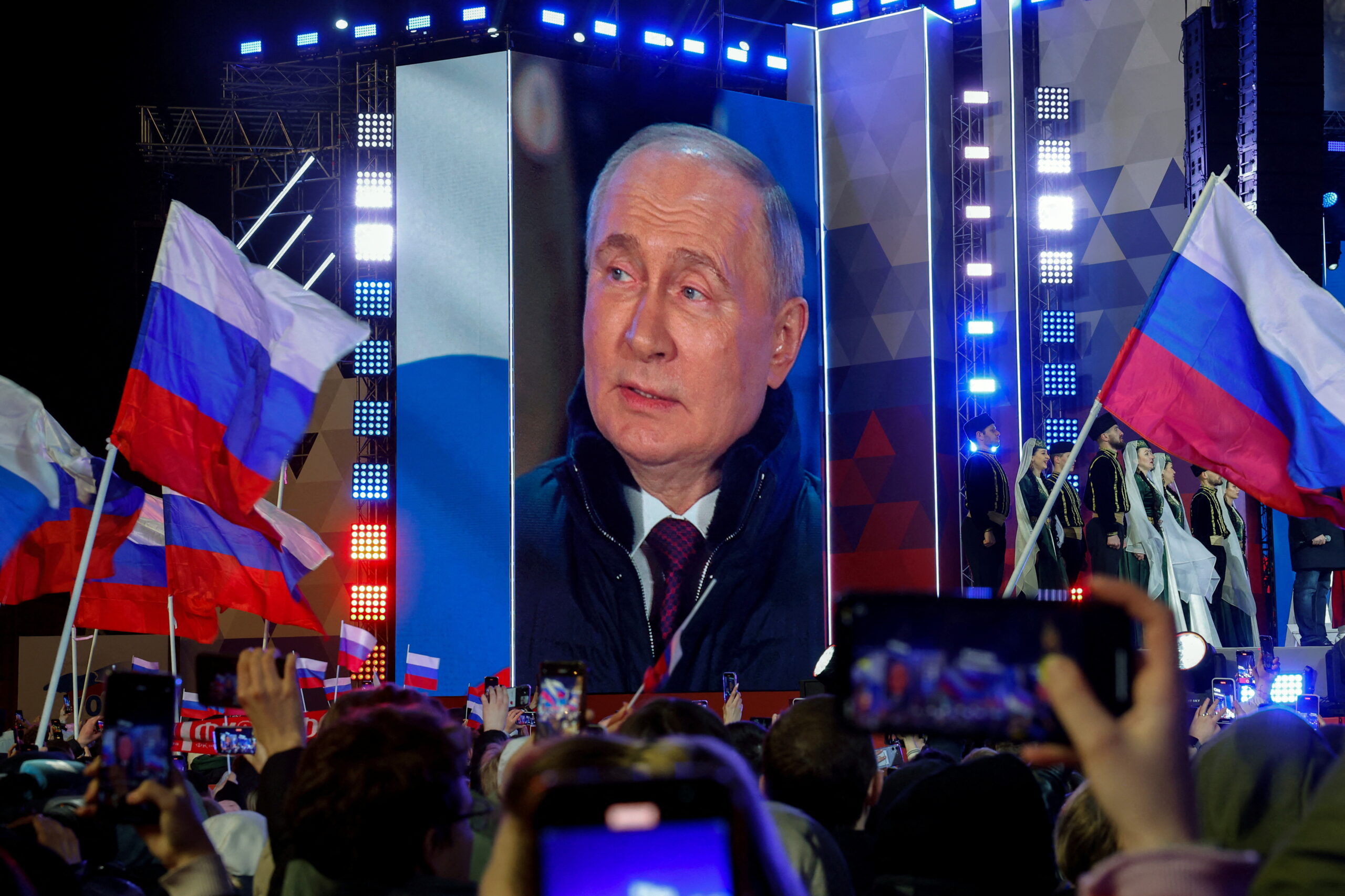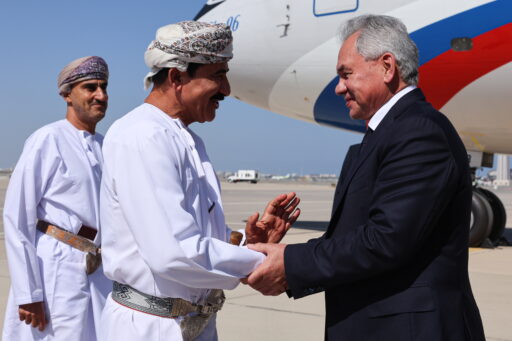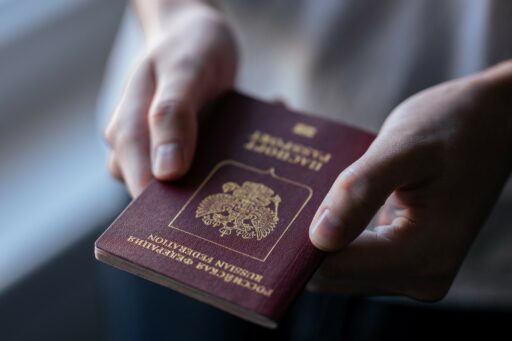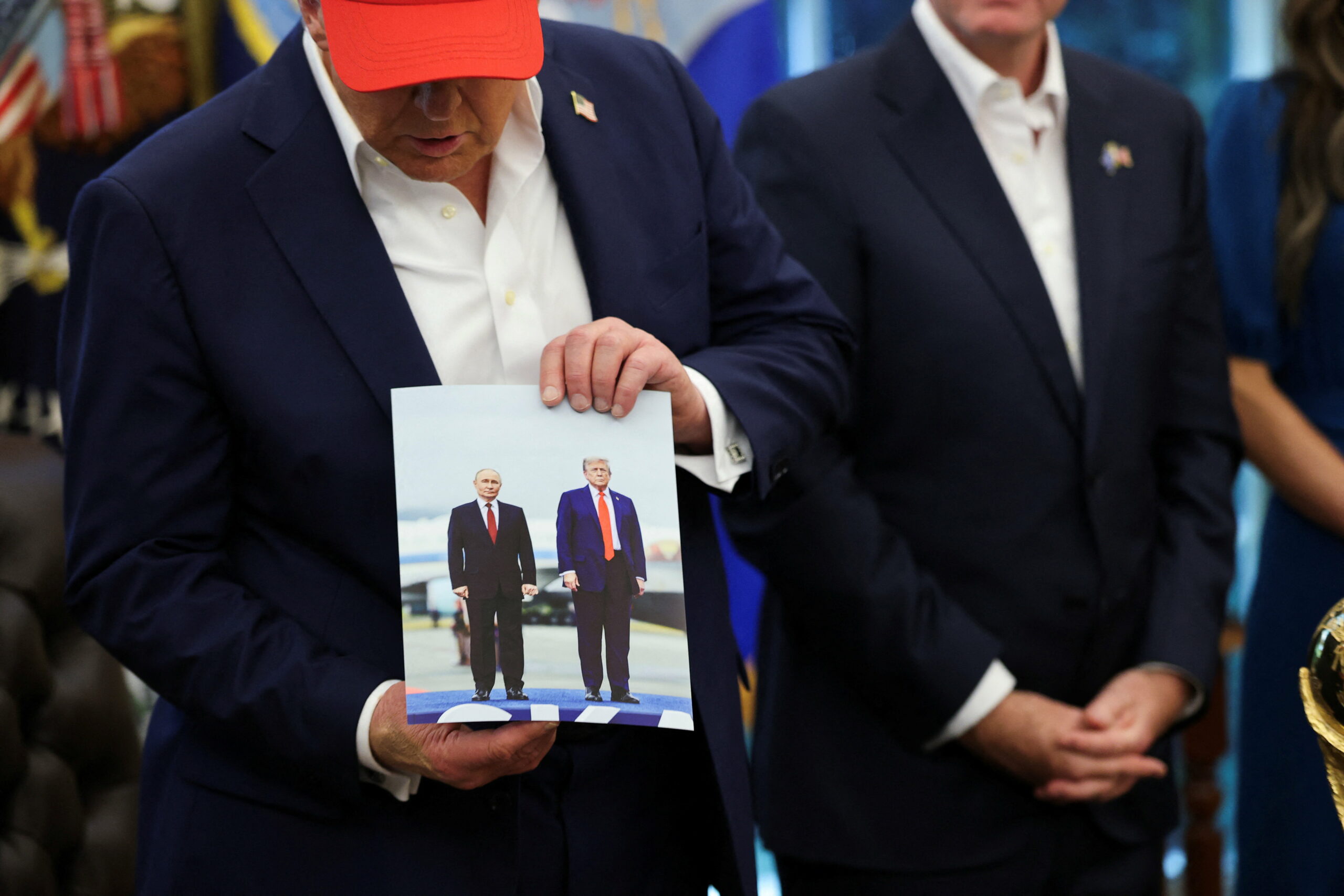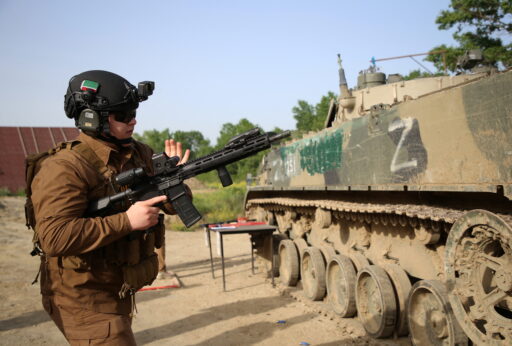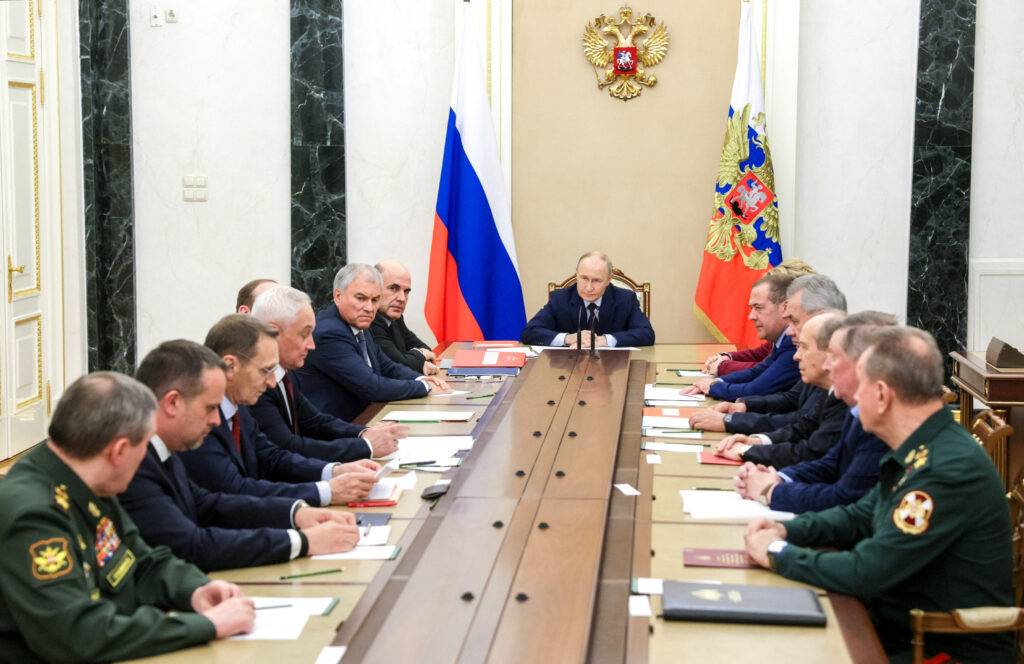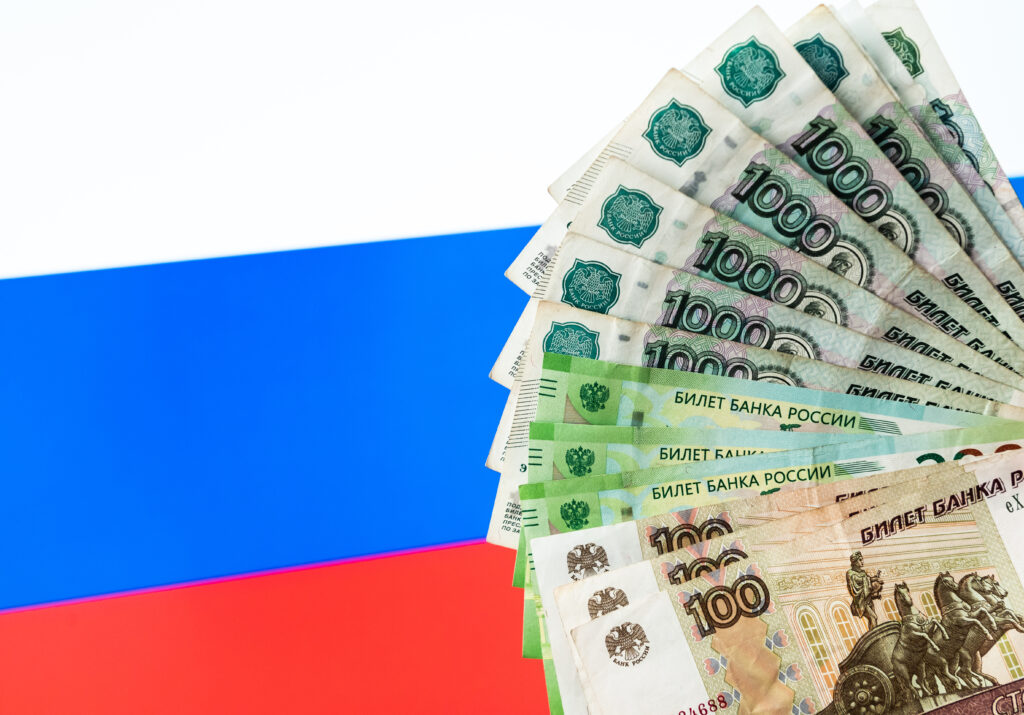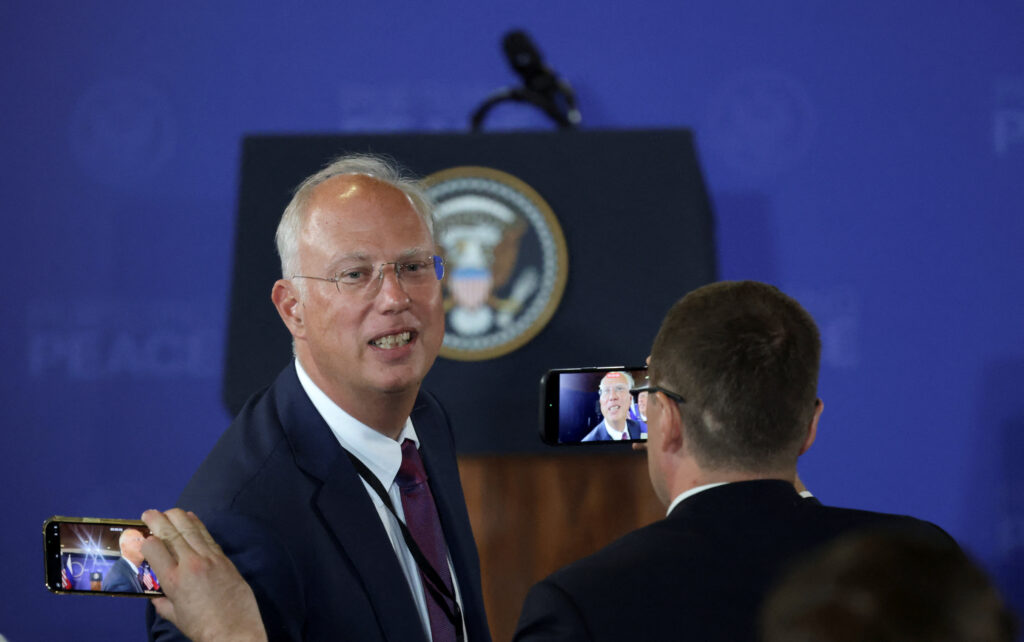Since 2022, Russia’s wartime experience has significantly accelerated and disrupted its political, social, and economic processes. Once a hegemonic electoral authoritarian regime, Russia now resembles a personalist dictatorship operating under a wartime state of emergency. Previously characterized by diverse elite ideologies—ranging from statist securitization to neoliberal technocracy—it has transformed into an illiberal imperial-nationalist power, promoting an official internal ideology for the first time since the Soviet Union. Once a hydrocarbon giant exporting primarily to Europe, it now directs its energy exports to China and the Global South. Strengthened cooperation with North Korea, Iran, and to a lesser extent, China has solidified Russia’s role as a great power sustaining a confrontation with a powerful Western coalition, at the cost of hundreds of thousands of lives and billions of dollars in matériel.
Analogies and Wartime Russia
There has long been interest in understanding the Putin regime and its global confrontations through analogy. Analogical thinking enables us to explain present-day phenomena by referencing familiar, previously analyzed, and already understood historical examples. This approach is particularly useful as it provides a snapshot of how we might expect a polity to function (e.g., «Country X is like Y, so it acts and will act like Z») and predicts the trajectory of its internal politics (e.g., «Country X is like Y, so it will evolve in Z way and can be challenged in α, β, or γ manner»).
However, analogical thinking is fraught with tempting biases and misleading comparisons, particularly in scholarly work. While pejorative analogies are easily spotted, academics and policy researchers often fall into the same trap, albeit with more refined terminology. Aligning the past with the present is challenging, even if we accept Marx’s oft-quoted dictum that «history repeats itself, first as tragedy, second as farce.»
When we apply conceptual labels, typological categories, or specific examples from the past to explain the present, we risk imposing our preconceived stereotypes without genuine benefit. To take one example, equating Putin with Hitler carries a host of assumptions for many audiences. It is not a neutral analogy, but one weighted with significant follow-on analytic expectations.
The reductio ad Hitlerum is of course quite common: analogies to the European interwar era (1919−1939) have been a regular feature in discussions about Russia for decades. Well before 2022, such historical comparisons were prevalent. Notably, Marlene Laruelle, a leading scholar of Russian nationalism and ideology, published an entire book in 2021 titled Is Russia Fascist? (Cornell University Press). The answer, incidentally, was no.
Hitler is not the only interwar figure invoked. Joseph Stalin, a totalitarian leader closer to Russia’s historical experience, has frequently been cited as a kind of Putin predecessor. As of May 28, 2025, a simple Google Scholar search for «Putin AND Stalin» yields over 23,000 results. Recent articles include «Russia Is Back to the Stalinist Future» (Foreign Policy), «Stalin, Putin, and the Cult of Human Sacrifice» (CEPA), «Putin’s Stalin Phase» (Foreign Affairs), and «Putin the Stalinist» (Hoover Institution). These analyses are not necessarily incorrect—comparisons to past Russian leadership can certainly have merit—but they highlight the persistent allure of interwar analogies in Western discourse.
We must approach interwar analogies cautiously, however, as they are emotionally charged and can easily mislead observers into comparisons that lack coherence or rely on oversimplified, half-remembered history exploited for attention. Yet, of course, these analogies should not be entirely discarded. They offer valuable insights into the contours of Russia’s current and future politics—and likely those of Ukraine as well. We simply need to make them carefully.
This essay explores four interwar analogies of varying analytic utility. The analogy of fascism, particularly its German variant, should generally be avoided except in carefully specified contexts. In contrast, three other analogies—institutional corporatism, national authoritarianism, and the looming turbulence of mass veterans’ politics—are underutilized but rich with insights.
No, Russia Is Still Not Fascist
The fascism analogy is a perennial temptation for commentators and scholars alike. The claim is straightforward: Russia is a fascist state, possesses a fascist ideology, or behaves in fascist ways. However, this assertion requires a coherent, comprehensive, and specific definition of fascism—a notoriously elusive concept, especially when taken out of its historical era. As historian Ian Kershaw aptly put it, «Trying to define ‘fascism’ is like trying to nail jelly to the wall.»
Defining fascism is complicated by three distinct issues: the scarcity of clear cases, the ambiguity of the analytical unit, and the term’s normative implications. To simplify:
- Scarcity of Cases: Few historical examples unequivocally qualify as fascist—primarily Fascist Italy and Nazi Germany. Beyond these, we encounter what are sometimes called «quasi-fascist» or «semi-fascist» regimes, such as Franco’s Spain, Salazar’s Estado Novo in Portugal, Austria’s Ständestaat under Dollfuss and Schuschnigg, or Metaxas’ Greece. And these partial fascisms are themselves disputed: many scholars argue that some or none of these are substantively fascist or otherwise share only certain features. With so few clear cases, creating a generalizable definition of fascism is challenging. And Mussolini’s Italy and Hitler’s Germany themselves differed significantly, with even left-wing scholars struggling to align them conceptually except in broad strokes. Thus, when we label Putin’s Russia as fascist, are we comparing it to Hitler’s racially genocidal and crowd-mesmerizing Führerprinzip, to Mussolini’s imperialist bluster backed by an inefficient state, or some abstract admixture of the two—and if so, how do we define it?
- Ambiguity of Analytical Unit: The term «fascism» is used to describe ideologies, states, political regimes, parties, social organizations, or subcultural groups—entities that are not at all equivalent. Without precision, we risk comparing apples to oranges, conflating a regime’s ideology with its institutions or a state’s actions with those of a social movement or subculture or simply individual figures. Imprecision in the object we want to characterize leads to lazy analysis. When we say Russia is fascist, we must ask exactly what level of analysis we’re dealing with.
- Normative Implications: Fascism is a loaded term, imbued with moral significance due to World War II’s legacy. For many, a fascist is an irredeemably malign entity, justifiably pursued to destruction. This perception is not unique to the West; in the former Soviet Union, the term carries similar weight. It is no coincidence that Russia’s regime frequently labels Ukraine’s government a «nationalist, fascist junta.» Such a powerful term is prone to misuse and can lose potency through persistent misapplication, as seen in contemporary U.S. discourse. So, when we describe something as fascist, there are normative reasons to get it exactly right.
So, is Russia fascist? Drawing on leading scholars like Ernst Nolte, Roger Griffin, Stanley Payne, Paul Gottfried, Zeev Sternhell, and Robert Paxton, we can propose a synthetic definition that captures the key elements that make fascism really fascist: fascism is the ideology of a modernist-futurist, statist, anti-communist, anti-liberal, ultranationalist, closed authoritarian regime driven by a belief in national rebirth through the glorification of hyper-violence and imperialist goals, headed by an extreme cult of personality leading a totalizing mass movement permeating society. Anything less fails to encompass the uniqueness of both Hitler’s Germany and Mussolini’s Italy, as well as smaller fascist movements elsewhere in the interwar, without also accidentally capturing a range of nationalist, corporatist, or post-colonial regimes (from New Deal America to Nkrumah’s Ghana or Sukarno’s Indonesia). Scholarship hesitates to apply the fascist label to mere nationalist or dictatorial regimes for good reason.
Does wartime Russia fit this model? It is a relatively closed authoritarian regime with imperial, multiethnic nationalist emphases and a statist economic tradition, engaged in a destructive war in Ukraine. Its ideology of Russian illiberalism is anti-liberal. However, it lacks an extreme cult of personality, a vision of national rebirth through violence, or a totalitarian movement demanding pervasive daily ideological service. It is not modernist-futurist. Russia is not fascist.
The fascism analogy is more applicable at a lower level of analysis, however. Rather than characterizing the regime or its broader ideology, we should focus on specific figures. For example, philosopher Aleksandr Dugin, now leading the Ivan Ilyin Higher Political School at Russian State Humanities University, espouses eschatological visions of national rebirth through violence, drawing on fascist, Traditionalist, and esoteric thought. Some of Patriarch Kirill’s speeches, as Laruelle has noted, also suggest a fascist-like interest in national rebirth. Pop-culture figures like Shaman deliberately employ fascist aesthetics, and militant nationalism appeals to war hawks and commentators. These are the appropriate targets for fascism analogies, not the regime itself or let alone Putin
Russia Is Reviving Institutional Corporatism and National Authoritarianism
Interwar analogies are not always inappropriate for describing wartime Russia. Two underutilized concepts—institutional corporatism and national authoritarianism—offer promising insights into the structure and character of Russia’s political order. These are both more precise in making a real connection between the interwar and contemporary Russia, but they also open up rich new approaches that are currently under-appreciated.
Wartime Russia and Corporatism
Institutional Corporatism refers to a method of organizing the economy and society into hierarchical, exclusive, differentiated, and highly coordinated entities representing social, economic, and political interests. As Philip Schmitter describes, it is «a system of interest and/or attitude representation, a particular modal or ideal-typical institutional arrangement for linking the associationally organized interests of civil society with the decisional structures of the state.»
Corporatism, rooted in European political thought, emerged as a reaction to 19th-century laissez-faire liberalism and an organizational alternative to socialism or communism. It flourished during the interwar era, as European states sought to minimize social conflict and promote state-led economic development. Politically, corporatism replaced elected parliaments with corporate chambers representing vocational, social, and economic groups, selected top-down to articulate policy interests upward. Socioeconomically, corporatism developed hierarchical networks of state labor and trade organizations, often organized by vocation and layered from local to national levels.
Italy’s Chamber of Fasces and Corporations and its previous incarnations, though never fully implemented, became a model emulated in Portugal, Spain, Estonia, and, to a lesser extent, Germany. Austria’s 1930s Ständestaat regime pursued a Catholic-clerical version, while Hungary and Poland experimented with corporatism in the immediate years before World War II. Even democracies like the New Deal-era U.S., Ireland under Eamon de Valera, and France’s Third Republic adopted institutions or policy solutions derived from corporatist thought. Today, Scandinavian and German-speaking states still retain vestiges of economic corporatism in their labor bargaining models, often termed coordinated market economies.
Wartime Russia shows signs of reviving corporatist socioeconomic thinking, also building on the Soviet tradition of official social organizations that was itself informed by interwar corporatist thought. The key figure in this development is First Deputy Prime Minister Sergei Kiriyenko, who as documented by Andrei Pertsev, is influenced by the mid-Cold War concept of Methodology—a vision of apolitical, managerial social engineering and coordination. This approach can increasingly be seen in a variety of new projects and programs coming out of Russia’s Presidential Administration.
Alongside the crystallization and officialization of Russian illiberalism as a state ideology, Kiriyenko has restructured the loyalist party system to channel controlled social representation, while promoting new official social organizations (especially youth programs) to mobilize pro-regime sentiment and train rising loyalist bureaucratic cadres, Meanwhile a new Special Coordinating Council for Security Enhancement was established to ensure an efficient war economy, underscored by appointing statist economist Andrei Belousov as Minister of Defense in May 2024.
At the same time, the Russian regime increasingly engages society and subordinate elites through hierarchical and functionally differentiated consultative councils, committees, and congresses, such as the Russian World Peoples’ Congress, the Russian Union of Industrialists and Entrepreneurs, the All-Russian Peoples’ Front, the Civic Chamber, and the Accounts Chamber. While most predate the war, they have become key venues as ‘one-stop-shops’ for presidential set-pieces and coordination efforts. And to this has been added growing roles for institutional-hierarchical State and Security Councils, which sit just below the presidential executive and act as top bodies collecting decision-influencing upper-tier elites heading respective policy demesnes.
Political corporatism—reformatting the Duma or Federation Council into vocational chambers—remains distant. However, the growing interest in institutionalizing social organization is clear. Interwar analogies illuminate this drive for control over social and economic processes without reverting to a full command economy. If this trajectory persists, Russia may resemble the bureaucratic-authoritarian regimes of Cold War Latin America, which drew similar lessons from the interwar period while avoiding its fullest expressions.
Wartime Russia and National Authoritarianism
Another benefit of looking to interwar analogies is reminding ourselves that not everything has to be Hitler. The regime-level characterization termed National Authoritarianism in fact aligns well with Russia’s political order, evoking non-fascist, right-wing authoritarian regimes of the interwar era. Sometimes described as national dictatorships, these regimes—such as Poland under Józef Piłsudski and the later Colonels’ Government, Hungary’s Horthy regime, the personalist dictatorships of Latvia and Lithuania, Estonia’s «Era of Silence,» or Salazar’s Portugal—pursued autocratization in the 1920s or 1930s, experimented with economic and political corporatism, and embraced nationalist ideologies—but critically without the anti-traditional modernist-futurism or extreme racialized visions found in fascist Italy or Germany.
These regimes were non-totalitarian, and preferred avoiding the violent, revolutionary mobilization of society. Many sought to suppress local fascists (as in the Baltics and Poland) or co-opt them as part of broader nationalist coalitions (as in Spain and Hungary). The Catholic Church often played a stabilizing and legitimating role, receiving policy concessions while remaining politically subordinate. In some cases, multiethnic tolerance was leveraged to bolster regime support through loyalist parties, intentionally marginalizing radical ethnic nationalists.
Modern Russia fits this model well, much better than pure fascist analogies. It is a personalist dictatorship in a wartime state of emergency, with subordinated constitutional institutions and quasi-corporatist experiments. The economy is militarized and coordinated but remains market-based, adhering to neoliberal macroeconomic practices. Hardline right-wing elements, particularly those tied to the Orthodox Church or among the influencer networks of Russia’s war correspondents, engage with the regime as partially co-opted factions, seeking policy influence but not controlling the leadership. Multi-confessional imperial civilizationism, rather than hardline ethnic nationalism, is a central theme in Putin’s rhetoric. For regime-level analogies, national authoritarianism is a far more fruitful framework.
Russia Will Face Veterans’ Challenges for the Foreseeable Future
A final interwar analogy that can provide insight into Russia today is the disruptive role of World War I veterans. Few post-Cold War states have faced the challenge of integrating and managing mass numbers of combat veterans, with notable exceptions like the U.S. and Russia’s handling of «Afgantsy» in the 1990s. When the current war ends, Russia will confront the task of demobilizing hundreds of thousands of veterans, many with significant combat experience or war-related injuries.
Interwar veterans formed the core of ideological paramilitary organizations that destabilized post-WWI Europe. With tight bonds to comrades, firsthand experience of state corruption and leadership failures, genuine grievances, and existential questions about the purpose of their sacrifices, veterans became highly politically relevant and ultimately very disruptive. They were easily mobilizable, with effective combat skills and high motivation, and in most cases were highly critical of peacetime civilian governance and its insufficiencies.
Indeed, most interwar states faced coup attempts led by veteran officers, and veteran mobilization often preceded fascist or nationalist takeovers, as seen in Mussolini’s Black Shirts, Hitler’s Brown Shirts, and anti-communist militias in Austria, Bavaria, Hungary, and elsewhere. They were the stated reason for Estonia’s counter-coup against fascist agitation in 1934 as well as a major cause of political dislocation in France and elsewhere.
Russia’s politics in the 2020s and 2030s will likely be shaped by how it manages its demobilized veterans and integrate them into society, the economy, and political institutions. Ensuring employment, PTSD and medical support, meaning-making social organizations, and symbolic recognition of veteran sacrifices will be critical. The treatment of veterans may determine whether Russia sees regime continuity or breakdown in the coming years, a dynamic that will also affect Ukraine. Veterans will cast a long shadow in the coming decades.
Conclusion
Analysis by analogy can be highly fruitful for envisioning the future of post-war Eurasian politics. The interwar era offers valuable historical lessons, but not the ones most often emphasized. This essay argues that the focus on fascism has been largely misguided, distracting from more insightful analogies: institutional corporatism, national authoritarianism, and veterans’ politics. Prediction in social science and political analysis is perilous, especially in turbulent times, but these approaches provide a promising starting point for understanding Russia’s trajectory.
